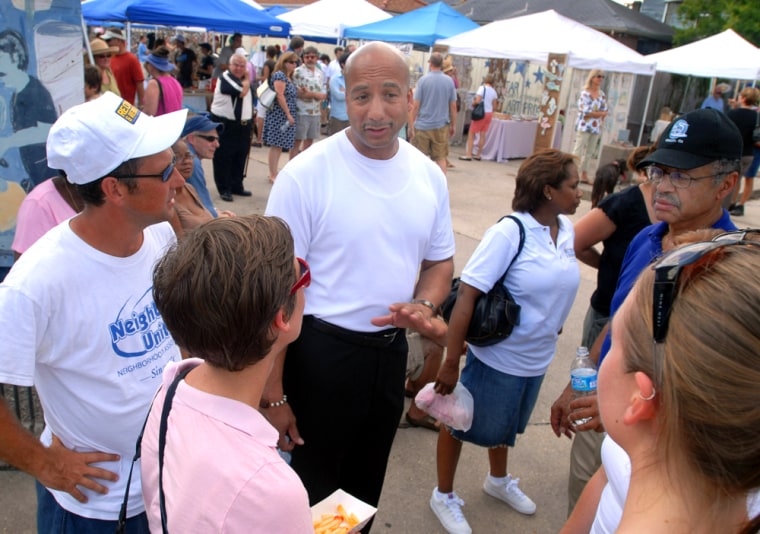After struggling for months to come up with $1.1 billion for stage one of New Orleans’ hurricane rebuilding plan, city officials faced with growing public frustration intend to move ahead with a drastically scaled-back first step of $216 million.
The blueprint being released Friday by city Recovery Director Ed Blakely is far more modest than the one he issued in March. But he said it will at least get the rebuilding started and give the public desperately needed signs of progress — which, in turn, will encourage private investment in New Orleans.
“Plans help you make progress,” Blakely said.
The plan — the general outlines of which were approved by the City Council earlier this year — is not the radical remaking of the city urged by some urban planners who wanted to see a New Orleans with a much smaller footprint, and with people moved out of flood-prone areas.
Instead, it largely embraces Mayor Ray Nagin’s settle-where-you-will philosophy, while also endorsing the removal of blight and the creation of parks, affordable apartments and vibrant communities.
Details of proposal
Under the plan, work would begin in the next few years on green space, health clinics, community centers, housing and libraries. Shopping centers would be redeveloped and streetscapes and storefronts spruced up.
Among other things, Blakely also eventually wants to see the mostly poor, mostly black Lower Ninth Ward become an Afro-Cuban version of the French Quarter, with music and art, architecturally diverse homes and restaurants.
By one estimate, rebuilding New Orleans could cost $14.4 billion in private and government money and take at least a decade.
But two years after Katrina laid waste to much of the metropolitan area, the rebuilding is slow, stymied by red tape, bureaucratic infighting and what some see as a lack of political leadership.
Blakely, who began work in January, more than 16 months after Katrina, had hoped to have $1.1 billion in federal grants, private investment and hurricane bond proceeds for the rebuilding. But the money has been slow in coming through, particularly the private investment New Orleans needs so badly.
So Blakely said he will move ahead with $216 million, consisting almost entirely of federal grants, and hope more money will follow.
“It’s certainly enough to lay the first couple of stones,” he said.
Lower Ninth remains largely desolate
Some of the city’s more affluent neighborhoods, such as Lakeview and Broadmoor, have significantly rebounded as residents invested their own money or solicited private help.
But other places are in poorer condition, including the Lower Ninth, which remains largely desolate, with decaying houses, overgrown lots, putrid trash piles and swarms of bugs. Only about 10 percent of the pre-storm population of 20,000 is back.
LaToya Cantrell, president of the Broadmoor Improvement Association, worries the sluggish rebuilding may have a chilling effect on private donations. She said groups donating money to jump-start neighborhoods want to see timelines for completing projects.
“There seems to be a lack of urgency within those halls and walls of City Hall,” she said.
Blakely said his plan includes priorities identified by neighborhood residents, such as affordable housing in the Lower Ninth and parks in eastern New Orleans.
Blakely said buildings in flood-prone areas will be elevated and efforts made to preserve the architectural and cultural feel of New Orleans’ many neighborhoods, with their shotgun houses, Creole cottages and Napoleonic-era buildings.
